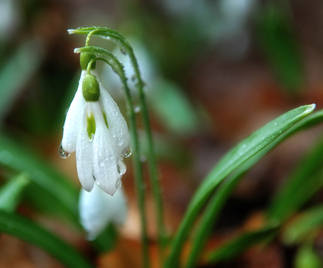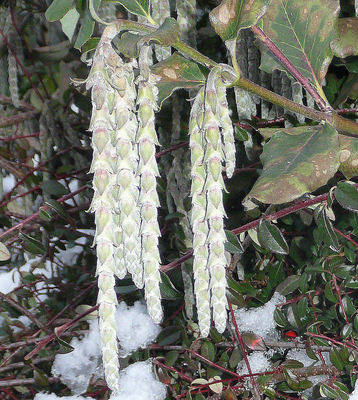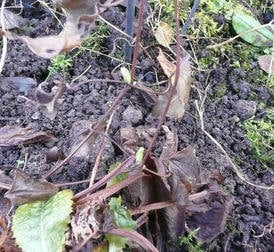The Magic of Snowdrops
Posted on
 |
It is a treat when in the countryside to suddenly come across a patch of snowdrops, either wild or planted by a kind gardener alongside their plot to cheer up walkers and drivers. Just so the patch in the image I chanced on in an area of woodland in a winding lane. I had to stop and take a photograph, the site of the Snowdrops nestled in among last year's leaves was lovely. Snowdrops are a bulb but are frequently bought and planted at this time of year, "in the green" which means in leaf. It can be easier to establish them as plants rather than bulbs, although more expensive. It does mean you can cheer up your windowsill now if you want by planting a few clumps. Snowdrops like humus rich but well drained soil, happy in light woodland with some shade. Most varieties are fully hardy and vigorous which makes them easy to grow. Close up the flowers are very delicate and there are some scented varieties such as G. 'S.Arnott' definitely one for a window box if you want to catch the scent. |
 |



 If you are under a blanket of snow, so too are the shrubs and bushes. I used to think to advice to knock snow off bushes was just pedantic gardening. I now know, having had several shrubs the trunks of which were split and damaged by the snow, that it's sound advice. When there is a lot of snow, shrubs, particularly those with open crown shapes, are prone to the snow weighing down the branches forcing them apart and eventually cracking the trunk. Sometimes the weight of the snow forces the branches close to the ground the snow freezes pinning the branch down, and again it snaps. It is worth knocking the heavy snow off shrubs to avoid damage. The image on left is a heap of branches which had to be pruned from an Elaeagnus after snow damage a costly mistake.
If you are under a blanket of snow, so too are the shrubs and bushes. I used to think to advice to knock snow off bushes was just pedantic gardening. I now know, having had several shrubs the trunks of which were split and damaged by the snow, that it's sound advice. When there is a lot of snow, shrubs, particularly those with open crown shapes, are prone to the snow weighing down the branches forcing them apart and eventually cracking the trunk. Sometimes the weight of the snow forces the branches close to the ground the snow freezes pinning the branch down, and again it snaps. It is worth knocking the heavy snow off shrubs to avoid damage. The image on left is a heap of branches which had to be pruned from an Elaeagnus after snow damage a costly mistake.